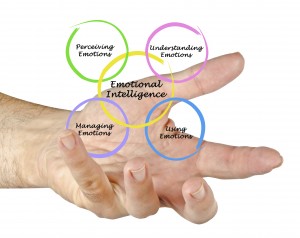Academics at the University of Lincoln in the United Kingdom have unveiled a fascinating project. They’ve created what’s being called a “social media garden”. The mood-modulated garden project, a collaboration between computer scientists and artists and controlled by crowd averaged Twitter responses, is being used to explore whether architecture is able to reflect and map human emotions. It’s a project that could have major implications for many industries, advertising included. Given the multitude of new communication platforms and ubiquity of mobile devices, could the past age of static advertising be succeeded by campaigns that are far more empathetic, interactive and literally adaptive to our shared emotional states? Neuroscience and psychology tells us that this is where marketing could be heading.
The importance of brands connecting to consumers on a deep, emotional level is not a new idea. Over the past five years, the media industry has provided some of the most emotionally engaging and game-changing creative campaigns that the world has ever witnessed. Drum-busting gorillas, brands celebrating cradle to grave customer loyalty through nostalgic footage, the placement of a semi-faux advertisement for the “best job in the world” on an idyllic island—who wouldn’t agree?
The common objective? To reach consumers where it matters most, in the deepest recesses of our human brains where the first response that is elicited is “I get this”. Indeed, this week witnesses the launch of Unilever’s new campaign for Dove Men Care, designed to resonate directly with fathers (and the rest of the family) in time for Father’s Day on June 15th. Sentimental images of children’s lives captured from a father’s-eye view perspective stream across the screen. These types of images and themes stimulate certain parts of the brain, like the amygdala (which registers whether information is directly relevant to an individual) and mirror neurons (that play a key role in the experience of empathy). This then activates relevant emotions and motivations that trigger the many subconscious brain processes underlying desire, selection and goal setting.
But do all these insights from neuroscience and psychology really help manufacturers sell more product? What are the real world benefits of creating campaigns that resonate with consumers’ emotional states? Experiments using MRI brain scanners, behavioural and market performance outcome measures, have all shown that information that is emotionally-charged is indeed encoded more deeply, retrieved more routinely and motivates actions designed to satisfy basic human needs and desires to a far greater extent than factual, emotionally-devoid messages. So emotion matters. Yet we now know that there are other forces at work that modulate and shape how and when we respond most effectively to emotional material.
Neuroscientists are now discovering that our moods (the subjective, experiential manifestation of our emotions percolating beneath the surface of consciousness and generated by the daily or hourly fluctuations of different neurochemicals across the brain) also play a far greater role in perception, learning and behaviour than we had previously thought. Furthermore, our emotions are easily influenced. They can adapt quickly to the prevailing mood of a relevant social group expressed face-to-face or across social media.
Psychologists refer to this phenomenon as “emotional contagion”. The term embodies the observation that humans have a strong tendency to align their emotional state with that expressed by those around them. They do this automatically by mimicking the postures, expressions, vocalisations and movements of others. This emotional “synchronization” typically occurs subconsciously and across all cultures and geographical locations.
The implications for the advertising industry are patent. Television commercials, outdoor billboards, creative installations, mobile communiqué—imagine how much more effective and resonant they would be if they were developed with the ability of the content to adapt, not only to the mood of an individual (monitored by any number of mobile biometric devices) but also to that of a nation, to a social group, to a global crisis. This is the emerging concept of “Moodvertising”, and in conjunction with the rapid development of physiologically sensitive technologies and communication platforms, could be set to redefine the communications industry in the cyber age.



